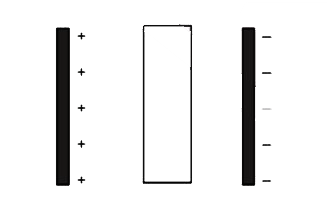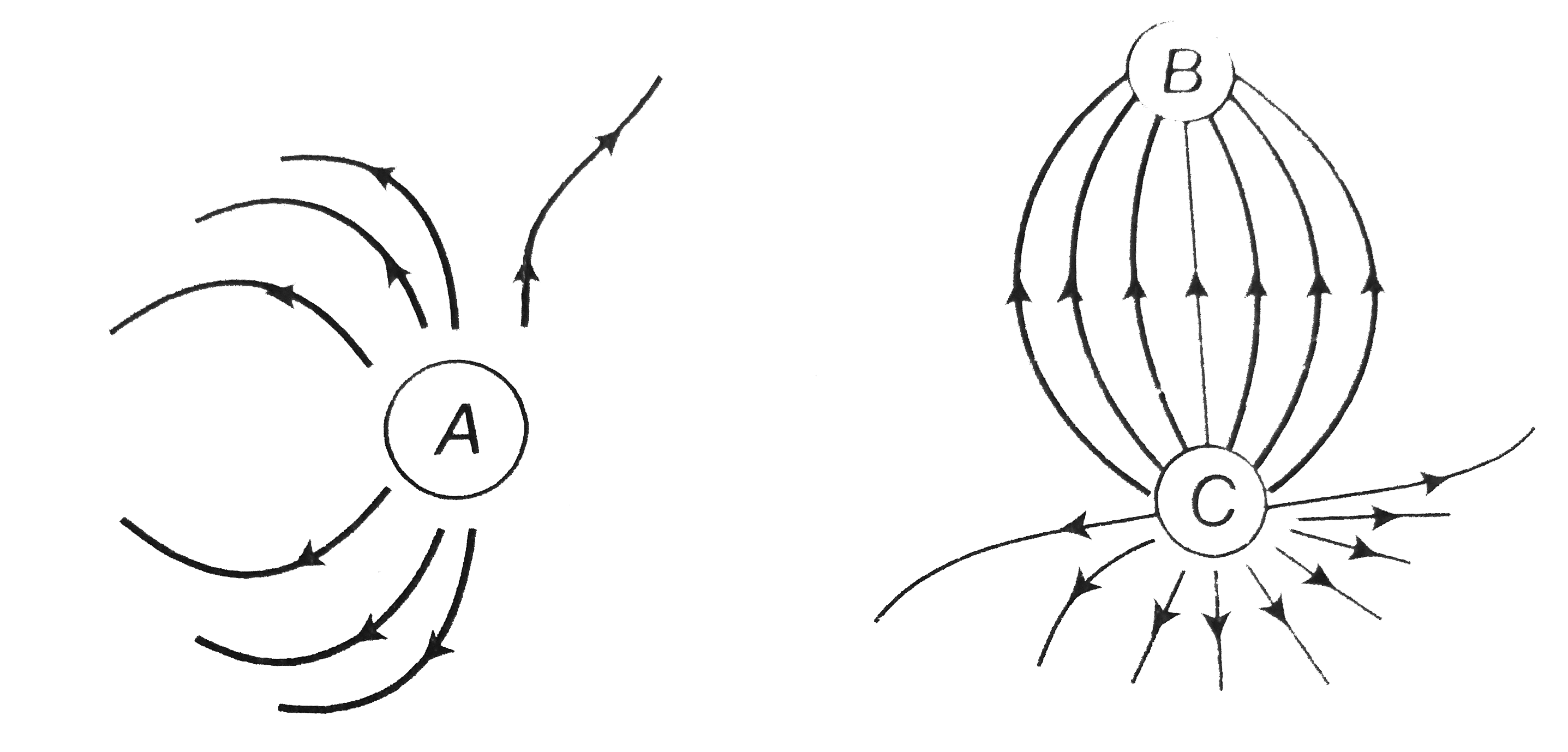Sketch the net electric lines between and around the particles.
To sketch the net electric field lines between and around charged particles, follow these steps:
1. Identify the Charges: Determine the types of charges involved (positive or negative). For this example, let's assume we have one positive charge and one negative charge.
2. Draw the Charges: On a piece of paper, sketch the two particles. Label one as a positive charge (e.g., +Q) and the other as a negative charge (e.g., -Q).
3. Determine the Electric Field Direction:
- Electric field lines originate from positive charges and terminate at negative charges.
- For the positive charge (+Q), draw arrows radiating outward from the charge in all directions.
- For the negative charge (-Q), draw arrows pointing towards the charge.
4. Sketch the Electric Field Lines:
- Between the two charges, the electric field lines will curve from the positive charge to the negative charge.
- Draw several lines starting from the positive charge and curving towards the negative charge. Ensure that the lines are denser closer to the charges and spread out as they move away.
5. Indicate the Direction: Add arrows to the lines to indicate the direction of the electric field. The arrows should point away from the positive charge and towards the negative charge.
6. Label the Diagram: Clearly label the charges and the electric field lines in your sketch. You can also indicate the regions of the electric field, such as "Electric Field Direction".
7. Review the Sketch: Make sure that the lines do not cross each other and that they represent the correct behavior of electric fields (i.e., they start from positive charges and end at negative charges).
- Electric field lines originate from positive charges and terminate at negative charges.
- For the positive charge (+Q), draw arrows radiating outward from the charge in all directions.
- For the negative charge (-Q), draw arrows pointing towards the charge.
- Between the two charges, the electric field lines will curve from the positive charge to the negative charge.
- Draw several lines starting from the positive charge and curving towards the negative charge. Ensure that the lines are denser closer to the charges and spread out as they move away.
Topper's Solved these Questions
- BOOK - RESNICK AND HALLIDAYCHAPTER - ELECTRIC CHARGES AND FIELDSEXERCISE - Check points9videos
ELECTRIC CHARGES AND FIELDS
- BOOK - RESNICK AND HALLIDAYCHAPTER - ELECTRIC CHARGES AND FIELDSEXERCISE - Problems63videos
ELECTRIC CHARGES AND FIELDS
- BOOK - RESNICK AND HALLIDAYCHAPTER - ELASTICITYEXERCISE - PRACTICE QUESTIONS (Integer Type)3videos
ELASTICITY
- BOOK - RESNICK AND HALLIDAYCHAPTER - ELECTRIC POTENTIALEXERCISE - (PRACTICE QUESTIONS) Integer Type1videos
ELECTRIC POTENTIAL
Similar Questions
A metallic slab is introduced between the two charged parallel plates as shown below. Sketch the electric lines of force between the plates.
 View Solution
View SolutionTwo large parallel thin plates having uniform charge densities +σand−σ are kept in X-Z plane at a distance d apart. Sketch an equipotential surface due to electric field between the plates. If a particle of mass m and charge −q remains stationary between the plates, what is the magnitude and direction of the filed ?
View Solution
Knowledge Check
- Question 1 - Select One
The net electric charge on DNA and histones is
Aboth positiveBboth negativeCnegative and positive, respectivelyDzero - Question 2 - Select One
The net electric charge on DNA and histones is
ABoth positiveBBoth negativeCNegative and positive respectivelyDzero - Question 3 - Select One
The net electric charge on DNA and histones is
Aboth positiveBboth negativeCnegative and positive, respectivelyDzero
wo uniformly large parallel thin plates having charge densities +σand−σ are kept in the X-Z plane at a distance 'd' apart. Sketch an equipotential surface due to electric field between the plates. If a particle of mass m and charge'- q' remains stationary between the plates, what is the magnitude and direction of this field ?
View SolutionSketch the magnetic field lines for a current-carrying circular loop near its centre. Replace the loop by an equivalent magnetic dipole and sketch the magnetic field lines near the centre of the dipole. Identify the difference.
View SolutionSketch the pattern of electric field lines due to an electric dipole.
View SolutionA charges particles particle is kept in equilibrium in the electric field between the plates of millikan oil drop experiment. If the direction of the electric field between the plates is reversed, then calculate acceleration of the charged particle.
View SolutionFigure shows the electric field lines around three point charges A,B and C. Which of the following charges are positive?
 View Solution
View Solution

